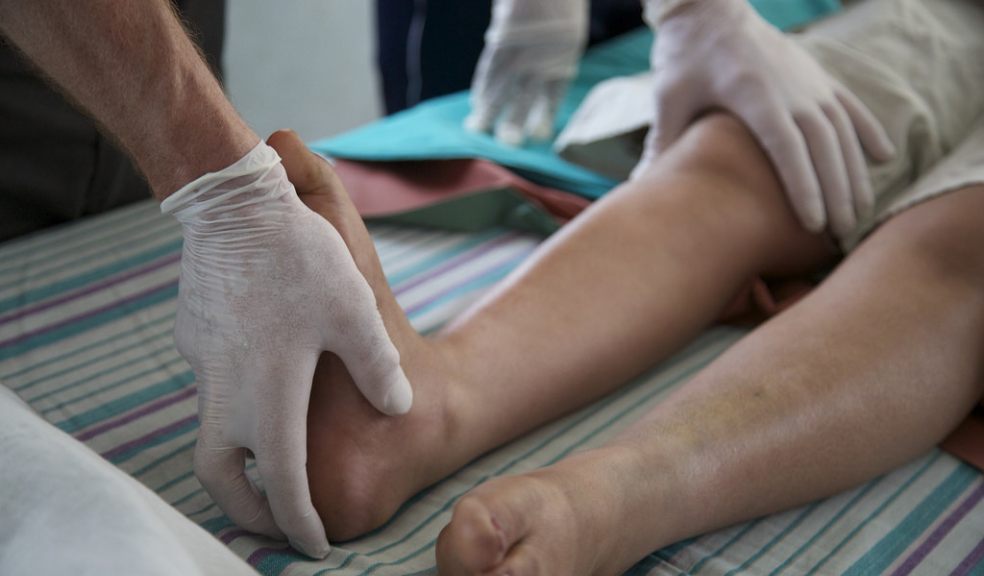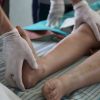
How the NHS could save millions with more effective leg ulcer treatment
For the past several years, the NHS has been embattled with budget constraints that threaten the vitality of the country’s healthcare system as a whole. A combination of an increasing patient population and a decreasing number of qualified healthcare providers has created a need to minimise costs, often in creative ways. A focus on social and community care programs, outsourcing doctors from other countries, and putting a cap on providers’ pay have all come into the mix to help solve the financial challenges faced by the NHS over the years. However, there seems to be a disconnect in how expenses can be reduced while still providing the highest quality patient care to the hundreds of thousands of individuals who depend on the system each year.
One of the cost-cutting objectives the NHS has failed to see is the ineffective, outdated treatment options provided to patients with certain conditions. Adults who present to the NHS for treatment of leg ulcers are offered a single plan of action through compression bandaging. Unfortunately, recent reports highlight the reality that compression bandages are not necessarily the most viable option for long-term treatment of leg ulcers, particularly those that are due to a venous disease. However, the NHS continues to lean heavily on compression bandages as the go-to treatment recommendation, costing the organisation an estimated £2 to £3 million in unnecessary expenses each year.
The Issue with Compression
For patients with leg ulcers, compression bandaging is the first course of treatment recommended from the NHS, regardless of the severity of the ulcer, the underlying issue causing the ulcer, or the potential for the compression to help heal the ulcer over time. Most experts suggest that while compression bandaging has the intended effect of reducing the pressure placed on the malfunctioning veins which may be causing an ulcer, the treatment is a short-term, temporary solution at best. This is because compression bandages do not solve the underlying problem of venous disease that is the likely culprit of a leg ulcer.
Patients with leg ulcers experience broken skin on the leg, often on the calf or just above the ankle. The wound does not heal on its own, but instead, it remains open and incredibly painful until treatment is provided. Compression bandaging helps cover the wound to keep it protected against the elements, and it may offer some relief of pain when worn consistently. Unfortunately, the leg ulcer is not often healed with compression bandaging alone. Most patients need an additional or alternative form of treatment if they want to minimise the chance of another ulcer forming in the future.
A Viable Alternative
A vein specialist in the UK, Dr Eddie Chaloner, explains that the use of compression bandages or stockings for the treatment of leg ulcers throughout the NHS is a widespread issue. The recourse, he suggests, is an outdated approach to a problem that may be fixed with a more modern treatment. Endovenous laser treatment, also known as EVLT, is an option for many patients presenting with leg ulcers caused by vein disease. With the help of laser therapy, a 40-minute procedure can dissolve the broken veins, giving healthy veins the ability to do their job within the legs. This correction is not a temporary solution like compression bandaging, but instead, offers a solution that treats the underlying condition for the long-term.
The NHS does not currently offer EVLT to the majority of patients with leg ulcers because many providers lack the training needed to perform the procedure efficiently. Instead, the recommendation for compression bandaging remains, leaving hundreds to thousands of patients with persistent pain due to an unhealed wound. The NHS could save the millions of pounds paid each year on repeat visits from leg ulcer patients by simply updating its approach to treatment, making EVLT an option for those who are in need. Until that time comes, patients with leg ulcers may be facing an uphill battle when trying to overcome the painful medical issue with compression bandages alone.



















